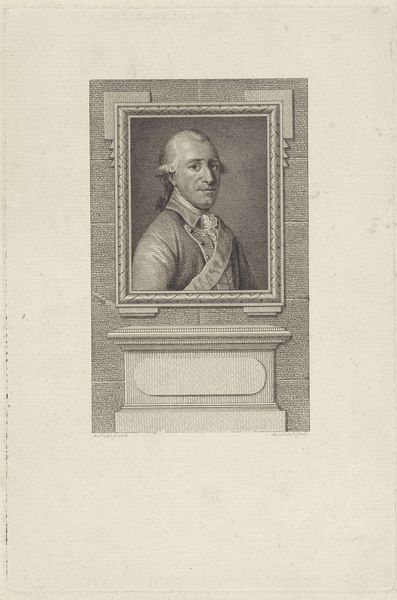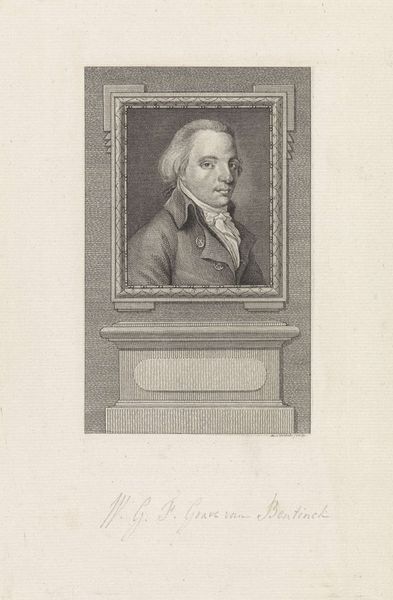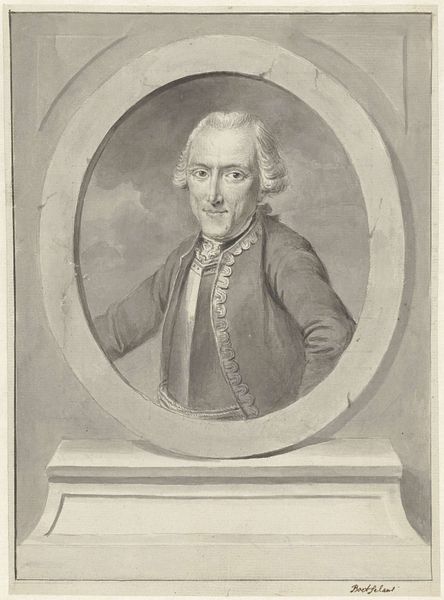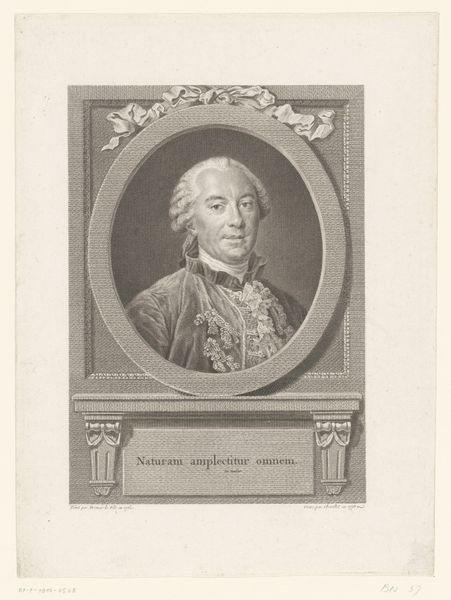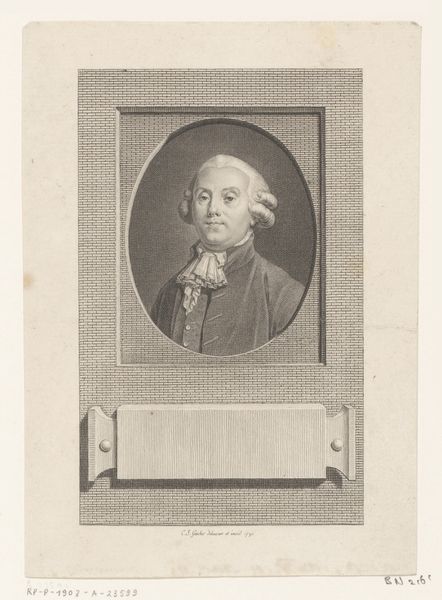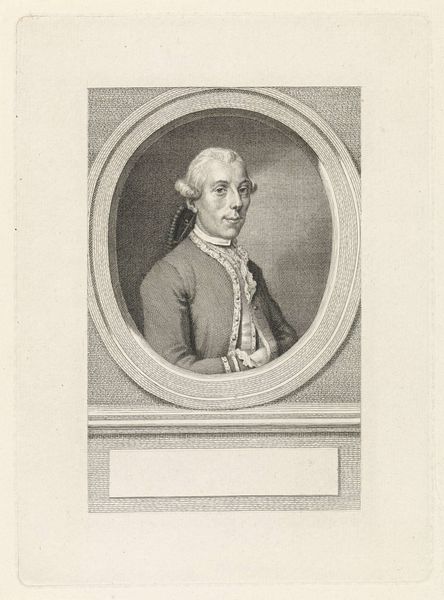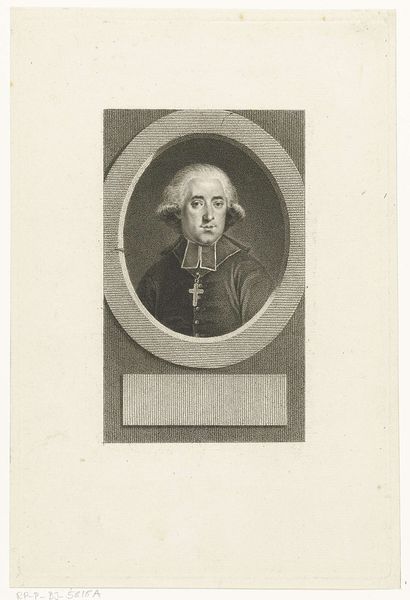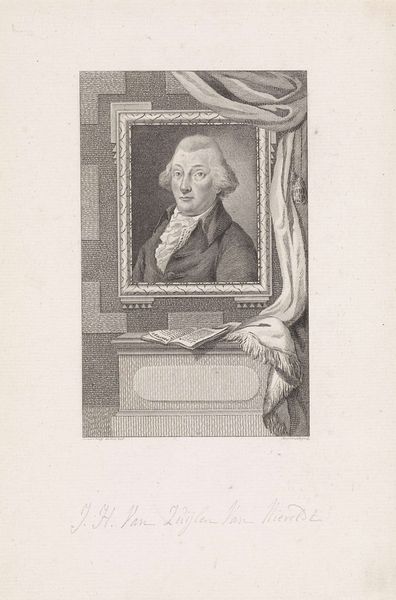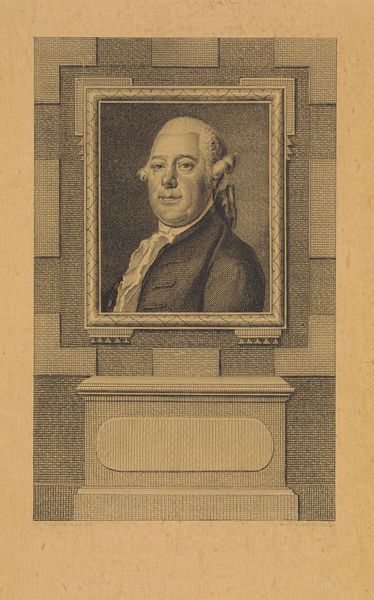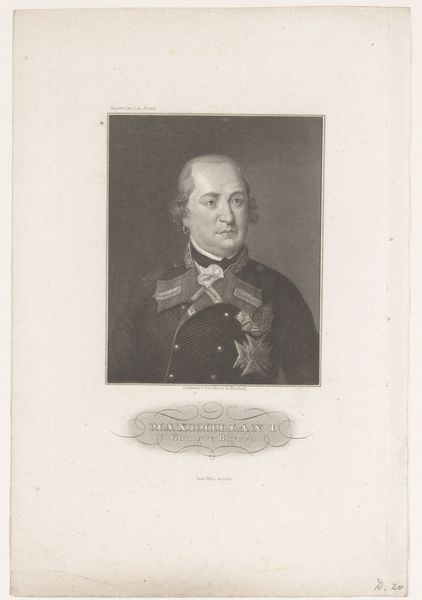
Dimensions: height 242 mm, width 159 mm
Copyright: Rijks Museum: Open Domain
Editor: This is a print titled "Portret van Jan Willem de Winter," made sometime between 1786 and 1809 by Reinier Vinkeles. It’s quite striking – very formal and proper. I’m curious, how do you interpret this work beyond it being a portrait? Curator: This engraving offers us a lens into the construction of masculine identity during a period of significant political and social upheaval. Consider the subject, Jan Willem de Winter, a military figure, presented within this ornate, almost theatrical frame. What do you make of that juxtaposition? Editor: Well, it definitely feels like a statement about power and status. Like he's being elevated. Curator: Precisely. The portrait becomes a vehicle for conveying authority, but let's also think about *whose* authority is being amplified here. De Winter’s life intersected with revolutionary ideals – he fought for the Batavian Republic. So, how does this classical style of portraiture, steeped in tradition, negotiate with the revolutionary spirit he embodied? Editor: That's interesting. It's almost contradictory. It's like he's being framed as part of the establishment even while fighting against it. Curator: Exactly. The image then, performs a delicate balancing act. It's not simply about depicting an individual; it's about solidifying a particular narrative of leadership during a transformative era. This work uses visual cues to establish and maintain specific social hierarchies. What implications might that hold for the representation of those excluded from such power? Editor: I see what you mean. Thinking about the political message challenges my first impression a lot. Thank you. Curator: Absolutely, it encourages us to question the stories these portraits silently uphold and those they simultaneously obscure.
Comments
No comments
Be the first to comment and join the conversation on the ultimate creative platform.
